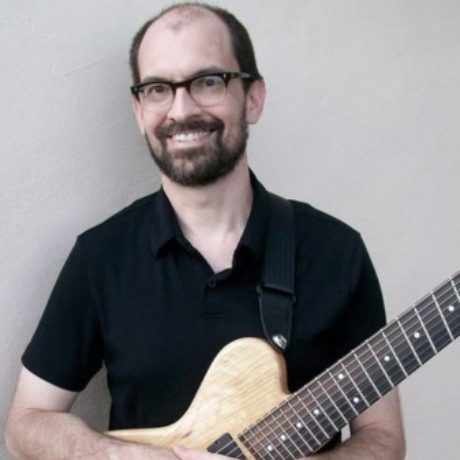Rhythm Changes - Modern Jazz Guitar Approach - Part II
Course Preview
FREE PREVIEWPlease sign in to track your progress
Sign in to purchase this course
Sign InWhat You'll Learn
Rhythm changes: A Modern Jazz Guitar Approach - Part II covers:
- Discussion of tonal, modal, and polytonal approaches to harmony
- Examples of plateau modal approaches to the A section using such sounds as diminished, diminished dominant, lydian dominant, mixture of blues and mixolydian, and altered
- Applying modern melodic vocabulary to the rhythm changes form, including 3-part-4ths, 4-part-4ths, and wide interval patterns and arpeggios
- McCoy Tyner-style example using quartal harmony and polytonal side-slipping
- Basic polyrhythm applications for melodic and harmonic improvising, groupings of three
- Applying modern harmonic vocabulary, 4-part-4th, Triad over Bass I, and Triad over Bass II chord types using the “replacement” concept
- Discussion of using the augmented scale to generate melodic and harmonic ideas with examples
- Exploration of tertiary-based polytonal side-slipping
- Advanced polyrhythm applications for melodic and harmonic improvising including half-note and displaced half-note triplets, unusual groupings of eighth- and quarter-note triplets, and groupings of five and seven eighth-notes
- List of suggested rhythm changes tunes
- Running time: 113 minutes
- 29 pages of written examples (including chord diagrams, standard notation, and TAB), exercises, and example solos with close-up views of the performances
- Each example performance is titled and numbered for easy navigation
- 24 MP3 backing tracks for written examples and solos
Sign in to purchase this course
Sign InCourse Content
1. Rhythm Changes - Modern Jazz Guitar Approach - Part II
1h 53mReviews & Ratings
I had and still have a lot of pleasure to study the first part! This part opens a lots of new way to play the rythm changes and go deeper in it in surprising directions!! Thank u tom great work!
Hello out there<br /> I just recently got this class and I really enjoyed it.<br /> each subject Mr Tom reveals here most of all open up doors for further exploration in more advanced paths of improvisation.<br /> It was great investment at least.....for my self<br />
Fantastic class from Tom except you better clear your calendar for a year (at least) because there is so much information to keep you busy... and a smile on your face. Much of what is covered here works in a myriad of situations so it is NOT just for rhythm changes tunes.
Very well explained and organized, <br /> He shows many new ways to improvise. <br /> Highly recommended.<br /> Tom Lippincott rules!<br />
Great.i really like both vids..they are great<br /> Great.i really like both vids..they are great<br /> Great.i really like both vids..they are great<br />
Please see my review to part 1; the same considerations I mentioned there apply to this class. Also a great investment in yourself.

